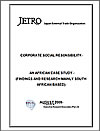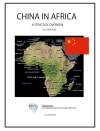 Botswana Railways (BR)
Botswana Railways (BR)
All data are collected in the Fiscal Year of 2008-2009.
Company Profile and History
The single railway line that transverses Botswana from Ramatlabama in the South to Bakaranga in the North was originally part of Bechuanaland Railway Company’s line from Vryburg to Bulawayo. It forms a direct link between South Africa and the countries lying in the North (i.e. Zimbabwe, Zambia, Zaire, Angola and Mozambique) and was an important section of the unrealized vision of a “Cape to Cairo” Railway.
The Bechuanaland Railway Company Limited was incorporated in 1893 with a share capital of 6,000 pounds. Its first task was to link up with the Cape Government Railway in Vryburg and construct a Northward bound line to Mafikeng. The Northward bound line to Mafikeng was opened to traffic in 1894; in 1897 the construction of the railway line from Mafikeng to Palapye and from Palapye to Francistown and from Francistown to Bulawayo was completed was completed.
At the end of 1959, the South African Railways purchased the section of the line from Vryburg to Ramatlabama from Rhodesia Railways, took over the operation of the line from Bulawayo to Mahalapye, which became the handover station for traffic and train crew changeover point between South African Railways and Rhodesia Railways.
In 1974 branch lines to Morupule Colliery and to Selibe Phikwe, both financed by the Government of Botswana, were opened to traffic.
Botswana Railways (BR) is the national railway of Botswana. BR was created in 1987 when the government of Botswana bought out the Botswana-based sections of the National Railways of Zimbabwe (NRZ). NRZ had been initially operating the rail system after Botswana had gained independence. Management of the BR is supported by RITES Ltd. of India.
The opening of the Beitbridge Bulawayo Railway in Zimbabwe in 1999 resulted in a major drop in the volume of freight transit and income. As a response the BR has been considering the construction of a direct line to Zambia, bypassing Zimbabwe, to regain income from transit
Botswana Railways has a railway network that comprise of a main line which runs from Ramatlabama in the south and Bakaranga in the north, three branch lines which connect Botswana Railways’ stations to the mines from which BR transports commodities, crossing loops, private and service sidings as well as station yards. The distance for the entire railway network of Botswana Railways is as follows; Main Line - 640 km; Francistown to Sua Pan (branch line) - 174.5 km; Palapye to Morupule Colliery (branch line) - 16 km; Private Sidings - 50 km; Service Sidings - 20 km;Station Yards - 30 km; Crossing Loops - 20 km.
The Main Line comprises of long welded 50 kg/m rails which are continuously welded on concrete sleepers with 50 kg/m turn out sets. The Francistown to Sua Pan Branch line is made up of long welded 40 kg/m rails which are continuously welded on concrete sleepers with 40 kg/m turn out sets; and Serule to Selibe-Phikwe and Palapye to Morupule branch lines comprise of jointed 40 kg/m rails on steel sleepers with 40 kg/m turn out sets.
BR signed an agreement with Ansaldo Union Switch and Signal, a company based in Queensland, Australia to design and construct the signalling and telecommunications infrastructure for the entire BR network. BR and Ansaldo agreed to form a joint venture entity to carry out the maintenance contract of the signalling and telecommunications infrastructure for eight years. An agreement was also signed between BR and the Rail Project Group as represented by Ansaldo Union Switch and Signals. The Rail Project Group is a consortium of companies based in Australia. Its members are Queensland Railways, EDI, Bombardier, Ansaldo Union Switch and Signal, Mincom and Connell Wagner. The companies possess a wide range of expertise which includes development of intelligent rail system, engineering designs and specifications for civil, track, rolling stock, signalling and telecommunications infrastructure, safety management systems information technology and training development.
In Country Location
Along A1 Main Road, Mowana Ward, Mahalapye, Botswana;
Telephone: +267 4711 375
Fax: +267 4711 385
Services and Products
Botswana Railways transports bulk freight, parcels and passengers.
Number of Employees
950 employees
Financial Information
Botswana Railways has continued to make operating losses due to among others; huge infrastructure and backlog of rolling stock overhaul maintenance expenditure not matched by an increase in revenue. The unaudited accounts for 2007/2008 show an operating loss of P79 million compared to a loss of P10 million in 2006/2007.
Passenger services account for less than 10% of BR operating revenues and have been in the red continuously. For example, in 2005/2006, BR direct costs of passenger services were P38.8 million, while revenues were only P9.1 million resulting in a net loss of P29.7 million.
Market Share
BR has the monopoly on the provision of rail services.
Business Objective
”To be the regional leader in customer driven transport logistics solutions”
Business Model
“Botswana Railways had over the years been marred by a number of problems, which had developed over a fifteen (15) year period from the time of the take over from the National Railways of Zimbabwe. These were compounded by poor organizational performance as well as historic under investment in rail network, rolling stock and infrastructure. As a result, for six years, starting in 1999, Botswana Railways had been experiencing operating losses which had led to a decrease in share capital.
In 2006, the Botswana Railways Board approved a holistic, in house drawn, Turnaround Strategy which sought to transform the organization by refocusing it to improve its performance and profitability through a total re-engineering process. The Turnaround Strategy had envisaged an investment running into millions of pula, spanning over a five year period to fund major renewal and recapitalization programs.
The Turnaround Strategy has the primary aims of reorganizing and rearranging Botswana Railways’ structures and internal business processes through seven strategy pillars; internal Business Re-organization; new Business Model; asset renewal; recapitalization; human Capital Development; information technology; and safety and environment.
Botswana Railways will achieve the objectives of the Turnaround Strategy through engaging strategy benchmark partners, allowing the organization to focus on its core business of transporting bulk commodities and soliciting shareholder’s assistance on funding for the rehabilitation and renewal of the company’s assets.
Successes to Date
2007: Botswana Railways commercialized its Greenfield property portfolio under BR Properties (Pty) Ltd. Greenfields include planned and available land for industrial, commercial, civic and community as well as residential use.
April 2008:Gabcon (Pty) Ltd became a subsidiary company of Botswana Railways.
August 2008: Botswana Railways completed the renewal of signalling and telecommunications infrastructure at a cost close to P 170 million. The renewed infrastructure is meant to improve operational efficiency and ensure that Botswana Railways implements its safety policy which was developed in line with the Southern African Railways Association safety policy framework.”
Ownership of Business
Botswana Railways is a state owned railway company
Benefits Offered and Relations with Government
Presenting, the Ministry of Works and Transport Committee of Supply Speech at Parliament on the 25th February 2009, Minister Johnnie Swartz pointed out that Government Assistance is conditional upon BR undertaking to increase the freight tariffs immediately to cost recovery levels. He further said that such assistance is also conditional upon BR ensuring that the turnaround strategy is implemented as well as entering into an agreement with Government which spells out specific milestones that would take BR out of the loss making situation.
Swartz indicated that a total investment of P586.5 million will be required to overcome shortages of locomotives and rolling stocks in order to meet current demand for traffic. He said that this will be financed by converting P104 million outstanding loans from Government into equity, disposing off locomotive and rolling stock assets that are no longer useful, use of BR reserves and guaranteed borrowing, on the basis of a debt-equity ratio of 0.6:1.
Botswana Railways suspended its passenger services in April 2009. In announcing the suspension, Swartz stated the following: “With the development challenges that the country is faced with, it might not be prudent for us to adopt a model of subsidy for rail passenger service at this stage. Furthermore, in light of the current economic conditions, Government’s focus on more critical development initiatives is essential. It should be noted that while a decision to suspend BR’s passenger service was being made, the fact that road transport on the public transport side has been developing at a rather pleasant rate was taken into cognizance. We further note that, the suspension of the rail passenger service will create a service gap which will still need to be filled and as such we are banking on the road oriented public transport operators to seize the opportunity and make good the desires of our current rail customers.”
Product Development
On 15 June 2009, the Zimbabwe Engineering Company (Zeco) signed a Memorandum of Understanding with Botswana’s Corridor Infrastructure Development Holdings Private Limited (InfraDev), to assist with technical expertise in the refurbishment of Botswana Railways’ rolling stock. In terms of the agreement, both Zeco and InfraDev will pursue business jointly, with Zeco providing technical expertise and InfraDev contributing marketing and administrative functions.
The key project will be the refurbishment of Botswana Railways rolling stock, to which end the establishing of a maintenance facility in Botswana will be considered. The signing of the MoU lead to the creation of InfraDev/Zeco Botswana-a SPV (special purpose vehicle) jointly owned by the two parties in equal shares.
The proposed new railway from Botswana to the Namibian coast may alleviate problems with South Africa’s “constipated” coal line to Richards Bay. Chief operating officer of CIC Energy’s mining unit Eddie Scholtz says a trans-Kalahari line might make sense. The company, building a coal mine and power station in Botswana, has been conducting a study with the Botswana government over the past 10 months to ascertain the feasibility of a coal line linking the Mmamabula coal deposits to Atlantic markets, mainly Europe.




